TechnoKontrol Corporate Governance
Asset-Installation Security, Environmental Protection, Safety Acts, Directives & Laws
TK-Corporate Governance, Asset-Installation Security, Environmental Protection & Employee-Client Safety Acts, Directives, Laws & Operational GuideLines.
Technokontrol works with all the highest levels of Safety, Security, Prevention, Passive/Active HSE Standards and using European and USA Safety, Asset Security, Environmental Protection & Client, Employee HSE Acts, Directives, Laws & Guidelines as the bases for all of our products, services, technologies, patentes, not only to meet these standards but to improve on them , to surpass them and in being a global leader in all fields relating to dangerous, explosive, contaminating, petrolchemical, energetic, transportation industries thus using already operational directives, laws, guidelines as our minimum Corporate Goverance bases to improve continously and to further these standards for everyones benefit as we are all effected directly and/or indirectly in todays global industrial World.

- The Health and Safety Executive is Britain’s national regulator for workplace health and safety. It aims to reduce work-related death, injury and ill health. It does so through research, information and advice, promoting training, new or revised regulations and codes of practice, and working with local authority partners by inspection, investigation and enforcement. www.hse.gov.uk
- Section 3(1) of the Health and Safety at Work etc. Act 1974 states: “It shall be the duty of every employer to conduct his undertaking in such a way as to ensure, so far as is reasonably practicable, that persons not in his employment who may be affected thereby are not thereby exposed to risks to their health or safety.”
- Regulation 6(3)(a) of the Dangerous Substances and Explosive Atmosphere Regulations 2002 states: “Every employer shall ensure that risk is either eliminated or reduced, so far as is reasonably practicable, in the presence or use of a dangerous substance at the workplace by replacing it with a substance or process which reduces or eliminates that risk.”
- Visit https://www.hse.gov.uk/press/press.htm for all HSE news releases.
Documents with regards of HSE Safety measures:
Safe use of Liquefied Petroleum Gas (LPG) at Small Commercial and Industrial Bulk Installations
When the risks are properly identified and managed, LPG can be safely used as a fuel source for many applications. This information is aimed primarily at users of LPG to provide information and help to ensure it is used safely. Users may wish to consider recording information about their installation, such as the route of any pipework, risk assessments they may make and any maintenance undertaken. A template for recording this type of information is available on the Liquid Gas UK website. This site focuses on people using small bulk LPG installations, similar to the one below.

Fire and explosion
The effects of accidental fires or explosions can be devastating in terms of lives lost, injuries, damage to property and the environment, and to business continuity. Working with flammable liquids, dusts, gases and solids is hazardous because of the risk of fire and explosion.
The Dangerous Substances and Explosive Atmospheres Regulations 2002
The Dangerous Substances and Explosive Atmospheres Regulations 2002 (DSEAR) require employers to control the risks to safety from fire and explosions. These pages tell you more about DSEAR.
Quick guide to DSEAR
What is DSEAR?
DSEAR stands for the Dangerous Substances and Explosive Atmospheres Regulations 2002.

Dangerous substances can put peoples' safety at risk from fire and explosion. DSEAR puts duties on employers and the self-employed to protect people from risks to their safety from fires, explosions and similar events in the workplace, this includes members of the public who may be put at risk by work activity.
What are dangerous substances?
Dangerous substances are any substances used or present at work that could, if not properly controlled, cause harm to people as a result of a fire or explosion. They can be found in nearly all workplaces and include such things as solvents, paints, varnishes, flammable gases, such as liquid petroleum gas (LPG), dusts from machining and sanding operations and dusts from foodstuffs.
What does DSEAR require?
Employers must:
- find out what dangerous substances are in their workplace and what the fire and explosion risks are;
- put control measures in place to either remove those risks or, where this is not possible, control them;
- put controls in place to reduce the effects of any incidents involving dangerous substances;
- prepare plans and procedures to deal with accidents, incidents and emergencies involving dangerous substances;
- make sure employees are properly informed about and trained to control or deal with the risks from the dangerous substances;
- identify and classify areas of the workplace where explosive atmospheres may occur and avoid ignition sources (from unprotected equipment, for example) in those areas.
Petroleum
Petrol is a dangerous substance, storage and use of petrol in workplaces is covered by the Dangerous Substances and Explosive Atmospheres Regulations 2002 (DSEAR). Dispensing petrol into a vehicle is covered by other legislation and in addition requires a licence.
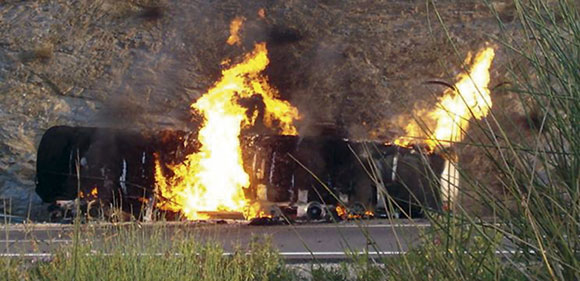
These pages tell you more about petrol:
- Petroleum (Consolidation) Act 1928 (as amended by DSEAR)
- Petroleum Spirit (Motor Vehicles etc) Regulations 1982 and Petroleum Spirit (Plastic Containers) Regulations 1982
- Further information
- Publications
- Frequently asked questions
Petroleum (Consolidation) Act 1928 (as amended by DSEAR)
Petroleum licences - the Petroleum (Consolidation) Act 1928 (as amended by DSEAR) requires that anyone operating a petrol filling station should have a licence issued by their local Petroleum Licensing Authority. The requirement applies both to retail and non-retail filling stations ie those that dispense petrol to the general public and those which only dispense petrol into their own vehicles. Petrol filling stations are defined as sites that dispense petrol into vehicles, boats or aircraft by electrical or mechanical means.
The licences have conditions relating to safe storage, dispensing, maintenance, record-keeping etc. The requirements of DSEAR also apply.

Prior to the introduction of DSEAR, anyone storing significant amounts of petrol required a licence. However the requirement now applies only to operators of petrol filling stations and certain non-workplace situations (see the link below relating to the Petroleum Spirit (Motor Vehicle etc) Regulations).
Petroleum Spirit (Motor Vehicles etc) Regulations 1929
The Petroleum Spirit (Motor Vehicles etc) Regulations 1929 , no longer apply to workplaces (including petrol filling stations). However, they do apply to the domestic storage of petrol, including vehicles parked in a domestic garage or near residential premises.
Petroleum Spirit (Plastic Containers) Regulations 1982
The Petroleum Spirit (Plastic Containers) Regulations 1982 no longer apply to workplaces (including petrol filling stations). However, they do apply to the domestic storage of petrol, including vehicles parked in a domestic garage or near residential premises.
ATEX and Explosive Atmospheres
Explosive atmospheres in the workplace can be caused by flammable gases, mists or vapours or by combustible dusts. Explosions can cause loss of life and serious injuries as well as significant damage.

These pages will tell you more about explosive atmospheres and ATEX:
- Explosive Atmospheres - Classification of Hazardous Areas (Zoning) and Selection of Equipment
- Background
- What is an explosive atmosphere?
- Where can explosive atmospheres be found?
- What is ATEX?
- Explosive atmospheres in the workplace
- Equipment and protective systems intended for use in explosive atmospheres
- Where can I find further information?
- BIS information on equipment and protective systems intended for use in explosive atmopsheres
- Publications
- ATEX and DSEAR Frequently asked questions
Background
Explosive atmospheres can be caused by flammable gases, mists or vapours or by combustible dusts. If there is enough of the substance, mixed with air, then all it needs is a source of ignition to cause an explosion.
Explosions can cause loss of life and serious injuries as well as significant damage. Preventing releases of dangerous substances, which can create explosive atmospheres, and preventing sources of ignition are two widely used ways of reducing the risk. Using the correct equipment can help greatly in this.

The Dangerous Substances and Explosive Atmospheres Regulations 2002 (DSEAR) place duties on employers to eliminate or control the risks from explosive atmospheres in the workplace. A summary of those requirements can be found below.
This page does not deal with intentional explosives such as those used in demolition work or blasting in quarries.
Further information:
What is an explosive atmosphere?
In DSEAR, an explosive atmosphere is defined as a mixture of dangerous substances with air, under atmospheric conditions, in the form of gases, vapours, mist or dust in which, after ignition has occurred, combustion spreads to the entire unburned mixture.
Atmospheric conditions are commonly referred to as ambient temperatures and pressures. That is to say temperatures of –20°C to 40°C and pressures of 0.8 to 1.1 bar.

Where can explosive atmospheres be found?
Many workplaces may contain, or have activities that produce, explosive or potentially explosive atmospheres. Examples include places where work activities create or release flammable gases or vapours, such as vehicle paint spraying, or in workplaces handling fine organic dusts such as grain flour or wood.
What is ATEX?
ATEX is the name commonly given to the two European Directives for controlling explosive atmospheres:
1) Directive 99/92/EC (also known as 'ATEX 137' or the 'ATEX Workplace Directive') on minimum requirements for improving the health and safety protection of workers potentially at risk from explosive atmospheres. The text of the Directive and the supporting EU produced guidelines are available on the EU-website. For more information on how the requirements of the Directive have been put into effect in Great Britain see the information in the section on Equipment and protective systems intended for use in explosive atmospheres.
2) Directive 94/9/EC (also known as 'ATEX 95' or 'the ATEX Equipment Directive') on the approximation of the laws of Members States concerning equipment and protective systems intended for use in potentially explosive atmospheres. The text of the Directive and EU produced supporting guidelines are available on the EU website. For more information on how the requirements of the Directive have been put into effect in Great Britain see the section on Selection of equipment and protective systems.

Further information:
Explosive atmospheres in the workplace
In Great Britain the requirements of Directive 99/92/EC were put into effect through regulations 7 and 11 of the Dangerous Substances and Explosive Atmospheres Regulations 2002 (DSEAR).
The requirements in DSEAR apply to most workplaces where a potentially explosive atmosphere may occur. Some industry sectors and work activities are exempted because there is other legislation that fulfils the requirements. These exemptions are listed in regulation 3 of DSEAR.
What does DSEAR require?
DSEAR requires employers to eliminate or control the risks from dangerous substances – further information on these requirements can be found on the DSEAR page. In addition to the general requirements, the Regulations place the following specific duties on employers with workplaces where explosive atmospheres may occur.

Classification of areas where explosive atmospheres may occur
Employers must classify areas where hazardous explosive atmospheres may occur into zones. The classification given to a particular zone, and its size and location, depends on the likelihood of an explosive atmosphere occurring and its persistence if it does. Schedule 2 of DSEAR contains descriptions of the various classifications of zones for gases and vapours and for dusts.
Further information and guidance on the classification and zoning of areas where potentially explosive atmospheres may occur and the selection of equipment for use in those areas:
Selection of equipment and protective systems
Areas classified into zones must be protected from sources of ignition. Equipment and protective systems intended to be used in zoned areas should be selected to meet the requirements of the Equipment and Protective Systems Intended for Use in Potentially Explosive Atmospheres Regulations 1996. Equipment already in use before July 2003 can continue to be used indefinitely provided a risk assessment shows it is safe to do so.
Identifying areas where explosive atmospheres may occur
Where necessary, the entry points to areas classified into zones must be marked with a specified 'EX' sign.

Providing anti-static clothing
Employers must provide workers who work in zoned areas with appropriate clothing that does not create the risk of an electrostatic discharge igniting the explosive atmosphere, eg anti-static footwear. The clothing provided depends on the level of risk identified in the risk assessment.
Confirming (verifying) overall explosion safety
Before a workplace containing zoned areas comes into operation for the first time, the employer must ensure that the overall explosion safety measures are confirmed (verified) as being safe. This must be done by a person or organisation competent to consider the particular risks in the workplace, and the adequacy of the explosion control and other measures put in place.

Equipment and protective systems intended for use in explosive atmospheres
The aim of Directive 94/9/EC is to allow the free trade of 'ATEX' equipment and protective systems within the EU by removing the need for separate testing and documentation for each Member State.
In Great Britain, the requirements of the Directive were put into effect through BIS Equipment and Protective Systems Intended for Use in Potentially Explosive Atmospheres Regulations 1996 (SI 1996/192).

The Regulations apply to all equipment intended for use in explosive atmospheres, whether electrical or mechanical, and also to protective systems.
Manufacturers/suppliers (or importers, if the manufacturers are outside the EU) must ensure that their products meet essential health and safety requirements and undergo appropriate conformity procedures. This usually involves testing and certification by a 'third-party' certification body (known as a Notified Body) but manufacturers/suppliers can 'self-certify' equipment intended to be used in less hazardous explosive atmospheres. Once certified, the equipment is marked by the 'EX' symbol to identify it as such.
Certification ensures that the equipment or protective system is fit for its intended purpose and that adequate information is supplied with it to ensure that it can be used safely.
BIS has policy responsibility for the Regulations (although HSE enforces them). More information on the 1996 Regulations and the ATEX EU Directive 94/9/EC can be found on the HSE website.
The Regulation of Onshore Unconventional Oil and Gas Exploration (Shale Gas)
This text outlines the regulation of emerging unconventional oil and gas developments.
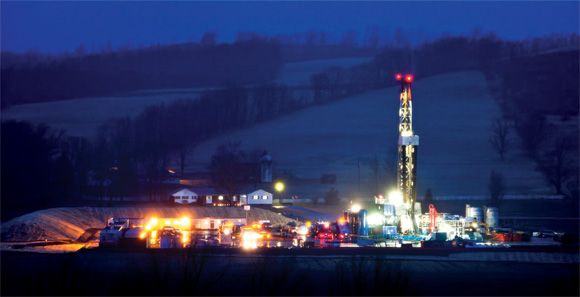
Unconventional gas is a term that includes natural gas produced from underground shale rock (shale gas). This gas is extracted from the rock using a technique called hydraulic fracturing (known as ‘fracking’), which is also used for coal bed methanes and in other more conventional oil and gas wells.
The Environment Agency (EA) in England and Wales, and Scottish Environment Protection Agency (SEPA) are the environmental regulators who monitor the environmental aspects of shale gas fracking. The key regulation that governs how shale gas fracking operators comply with environmental laws is the Environmental Permitting Regulations 2010.
HSE monitors shale gas operations from a well integrity and site safety perspective. We oversee that safe working practices are adopted by onshore operators as required under the Health and Safety at Work Etc Act 1974, and regulations made under the Act. These specifically are:
- The Borehole Site and Operations Regulations 1995 (BSOR) applies to shale gas operations.
(These regulations are primarily concerned with the health and safety management of the site).
- The Offshore Installations and Wells (Design and Construction, etc) Regulations 1996 (DCR) apply to all wells drilled with a view to the extraction of petroleum regardless of whether they are onshore or offshore.
(These regulations are primarily concerned with well integrity).
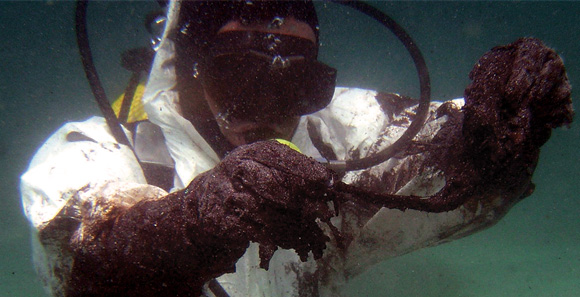
HSE works closely with the Environment Agency (EA) and the Department of Energy and Climate Change (DECC) to share relevant information on such activities and to ensure that there are no material gaps between the safety, environmental protection and planning authorisation considerations, and that all material concerns are addressed.
The Environment Agency and HSE have a ‘Working together agreement’ that explains the joint approach to the regulation of unconventional oil and gas developments.
Storage of Flammable Liquids in Process Areas, Workrooms, Laboratories and Similar Working Areas
The Dangerous Substances and Explosive Atmospheres Regulations 2002 (DSEAR) require risks from the indoor storage of Dangerous Substances to be controlled by elimination or by reducing the quantities of such substances in the workplace to a minimum and providing mitigation to protect against foreseeable incidents.

It is recognised that for practical purposes where flammable liquids are used, there is likely to be a need for a limited quantity to be stored in the workroom/working area. It is the responsibility of the employer / dutyholder when carrying out their risk assessment required under DSEAR Regulation 5, to justify the need to store any particular quantity of flammable liquid within a workroom/working area. However, the guiding principle is that only the minimum quantity needed for frequently occurring activities or that required for use during ½ day or one shift should be present in the workroom/working area. Clearly actual quantities will depend on the work activity and also the organisational arrangements for controlling the fire risks in the workroom / working area.
When not in use, containers of flammable liquids needed for current work activities should be kept closed and stored in suitable cabinets or bins of fire-resisting construction and which are designed to retain spills (110% volume of the largest vessel normally stored in it). These should be located in designated areas that are where possible away from the immediate processing area and do not jeopardise the means of escape from the workroom/working area. The flammable liquids should be stored separately from other dangerous substances that may enhance the risk of fire or compromise the integrity of the container or cabinet/bin; for example energetic substances, oxidizers and corrosive materials. It is recognised that these other dangerous substances may be flammable liquids in their own right or held in a flammable liquid. However, it is still inappropriate to store these in the same cabinets or bins with other flammable liquids. [Further guidance on Energetic and spontaneously combustible substances is contained in HS(G)131 published by HSE]
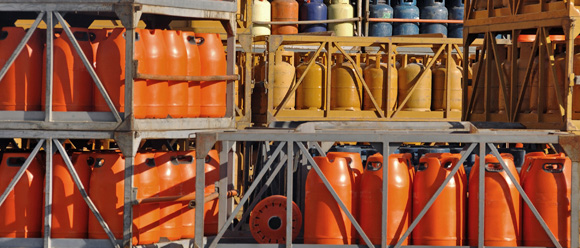
It is recommended that the maximum quantities that may be stored in cabinets and bins are no more than 50 litres for extremely, highly flammable and those flammable liquids with a flashpoint below the maximum ambient temperature of the workroom/working area; and no more than 250 litres for other flammable liquids with a higher flashpoint of up to 55°C.
These quantities are intended to be viewed as recommended maxima representing good industry safe practice, rather than be taken as absolute limits. There is intended to be some flexibility with these limits, where it is recognised that the design of modern day buildings and the pattern of work can sometimes make adherence to these quantities difficult to achieve; for example, in large or open-plan workrooms / working areas. However, where the employer/dutyholder does identify a need to store quantities in excess of the recommended maxima, a robust demonstration of this requirement would need to be made and in particular the risk assessment should take into account:
- The properties of the materials to be stored or handled in the workroom / working area. For mixed storage the worst case situation should be applied, i.e. all materials in the storage cupboard or bin should be considered as being the same material as the one that has the lowest flashpoint;
- The size of the workroom / working area and the number of people working in it;
- The amount of flammable liquids being handled in the workroom / working area and the quantities of liquid that may be accidentally released or spilled;
- Ignition sources in the workroom / working area and potential fire spread in the event of an ignition:
- Exhaust ventilation provision to the workroom / working area and / or the storage cupboard or bin;
- The fire performance of the storage cupboard or bin;
- The arrangements for closing the cupboard or bin doors/lid in the event of a fire;
- Means of escape from the workroom / working area.
The particular objective, in the event of an incident, is to ensure that people can safely escape from the workroom / working area. In this context, the purpose of storing Dangerous Substances in cupboards and bins of appropriate construction and design is to provide a physical barrier to delay the involvement of these materials in a fire and limit the passage of flame and hot gases should the Dangerous Substances subsequently become involved, for sufficient time for people's safe evacuation and the dutyholder's immediate emergency procedures supporting this to be implemented.

Regulation 6 guidance text together with appendices 4 and 5 of the 2013 edition of L138 provide general guidance and details of the performance requirements for fire resisting cupboards and bins. It is important to recognise that these do not specify an absolute test or standard for the cupboard or bin itself, rather they relate to nominal construction principles. Namely:
- that the materials used to form the sides, top, bottom, door(s) and lid are capable of providing the required fire resistance (i.e. 30 minutes integrity) and reaction to fire (i.e. minimal risk);
- that the joints between the sides, top and bottom of cupboards and bins should be free from openings or gaps;
- that the lid / doors should be close fitting against the frame of the bin/cupboard, such that there is a nominal overlap between the frame and lid/doors in their closed position;
- that the supports and fastenings should be of a material with a melting point greater than 750°C.
These criteria represent the minimum performance requirements for compliance with the current legislation. However, it is to be noted that there are a number of more demanding standards and design specifications, which refer to the fire performance of the complete cabinet structure, including: BS EN 14470-1:2004 'Fire safety storage cabinets – Part 1: Safety storage cabinets for flammable liquids'; Factory Mutual, Underwriters Laboratories and ANSI/NFPA 30 standards. Where standards go beyond the minimum requirements of UK health and safety legislation, it is to be emphasized that their implementation in the UK is not a legal requirement. However, for quantities in excess of the recommended maxima employers/dutyholders may find cabinets with enhanced fire performance help in making their risk assessment demonstration.

It is of course the responsibility of the employer/dutyholder to ensure that cabinets to any particular standard or design specification do meet the minimum legal requirements. Equally, the use of cabinets with enhanced fire performance should not be seen as a substitute for the provision of dedicated store rooms and outdoor storage areas for the safe keeping of containers which are nominally empty or are not needed for current work.
Offshore Directive - The Safety of Offshore Oil and Gas Operations
Following the Deepwater Horizon incident in the Gulf of Mexico in April 2010, the European Commission (EC) expressed its initial views on the safety of offshore oil and gas operations in its communication ‘Facing the challenge of the safety of offshore oil and gas activities’ (published on 13 October 2010). The EC communication concluded that the existing divergent and fragmented regulatory framework applying to the safety of offshore oil and gas operations in Europe, along with current industry safety practices did not provide adequate assurance that risks from offshore accidents were minimised throughout the Union.

On the 28th June 2013, the EC published the Offshore Directive. The objective of this Directive is to reduce as far as possible the occurrence of major accidents related to offshore oil and gas operations and to limit their consequences. The Department of Energy and Climate Change (DECC) and HSE will jointly lead the transposition of the Directive as it contains requirements relating to licensing, environmental protection, emergency response and liability, in addition to safety. The Directive has to be implemented by 19th July 2015.
Although the majority of the Directive is likely to be transposed into new Offshore Installation (Safety Case) regulations, it is expected that additional existing HSE and DECC legislation (e.g. on well integrity and emergency response) will also have to be updated to fully implement the Directive.
Both DECC and HSE’s implementation teams are currently working to complete their analysis of the Offshore Directive before beginning to draft new regulations in conjunction with legal advisers. The timetable for the remainder of the transposition process is:
| Date | Action |
|---|---|
Nov – March 2014 |
Informal consultation with industry, Trade Unions and other stakeholders (eg the environmental NGOs) on the offshore competent authority options, emerging issues and draft regulations. |
April 2014 |
DECC Ministerial submissions and HSE Board Paper on the Offshore Directive consultation package |
June – September 2014 (approximately) |
Formal consultation on the competent authority and legislative proposals to implement the Directive |
October - November 2014 |
Final drafts of new regulations produced, based on consultation responses and final legal package prepared, including updated guidance |
December 2014 |
DECC Ministerial submissions and HSE Board Paper on the Offshore Directive legal package |
January 2015 |
HSE Minister asked to clear the Offshore Directive legal package
|
February 2015 |
Regulations to implement the Offshore Directive laid before Parliament |
March 2015 |
Guidance for regulators and operators on new regulations published |
19 July 2015 |
New offshore Regulations come into force |
This timetable will be updated as firmer dates become available.

Carbon Capture and Storage
CCS is a low-carbon technology which captures CO2 released from coal and gas for power generation and from other industrial processes and transports it offshore for safe and permanent underground storage. In GB storage of CO2 will only take place offshore.
CO2 Capture
Currently there are three different capture technologies available to capture CO2:
- Post-combustion capture of CO2 occurs after the burning of fossil fuels. CO2 is separated from flue gas when it is passed through a liquid which causes a chemical reaction. This is also called scrubbing.
- Pre-combustion capture is where CO2 is separated or removed prior to the burning of fossil fuels. The pre-combustion technology converts fossil fuels into a gas made up of CO2 and Hydrogen (H2). These gases are then separated, with H2 used to fuel the power plant.
- Oxyfuel combustion burns fossil fuels with nearly pure oxygen. The flue gas produced only contains CO2 and steam. These are separated by a cooling process with the water condensing leaving a flue gas of almost pure CO2.

CO2 Transport
CO2 is likely to be transported by pipeline from the capture site to an offshore installation located near a suitable underground reservoir. However, in some cases, tankers may be used to transport CO2 to offshore installations.
CO2 Storage
The final stage of the CCS process involves injecting CO2 at high pressure from an offshore installation into a deep geological formation such as depleted oil or gas reservoirs, or a saline aquifer. Potential storage sites will be chosen on the basis of their ability to safely contain stored CO2 without leakage.

General Hazards of Carbon Dioxide
For over a century CO2 has been recognised as a workplace hazard at high concentrations. However, CO2 is naturally present in the air we breathe at a concentration of about 0.037% and is not harmful to health at low concentrations. At room temperature and atmospheric pressure CO2 is a colourless and odourless gas and, because of this, people are unable to see it or smell it at elevated concentrations. CO2 is not flammable and will not support combustion. As the concentration CO2 in air rises it can cause headaches, dizziness, confusion and loss of consciousness. Since CO2 is heavier than air, fatalities from asphyxiation have occurred when, at high concentrations, it has entered confined spaces such as tanks, sumps or cellars and displaced Oxygen. It is also possible for CO2 to accumulate in trenches or depressions outside following leaks and this is more likely to occur following a pressurised release where the released CO2 is colder than the surrounding air.
In GB, CO2 is classed as a ‘substance hazardous to health’ under the Control of Substances Hazardous to Health Regulations 2002 (COSHH). The HSE publication ‘EH40/2005 Workplace exposure limits’ provides workplace exposure limits (WELs) for CO2. WELs are limits to airborne concentrations of hazardous substances in the workplace and are set in order to help protect the health of workers. Workplace exposure is calculated by taking an average over a specified period of time. The WELs for CO2 are:
- Long-term exposure limit (8-hr reference period) of 5000 ppm
- Short-term exposure limit (15 minute reference period) of 15000 ppm

Regulating CCS
CCS is an emerging process and is not specifically addressed by GB health and safety legislation. However, existing legislation can be used to effectively regulate the safety of the CCS process chain. In particular the Health and Safety at Work etc. Act 1974 (HSWA) applies to CCS processes onshore and, from April 2013, offshore. Sections 2 and 3 of HSWA require employers to ensure the health and safety of workers and members of the public, so far as isreasonably practicable. CCS does not currently attract duties under GB major accident hazard legislation. However, the general duties under the existing legislation means that CCS operators will be required to take a proportionate approach to managing all CCS risks.
In addition the following legislation will also apply to the CCS process chain:
- Pipelines Safety Regulations 1996 (PSR): For onshore and offshore pipelines Part II of PSR, which covers safe design and operation, will apply to CO2 pipelines.
- Control of Major Accident Hazards Regulations 1999 (COMAH): Where CO2 capture sites use dangerous substances in quantities above a certain threshold COMAH will apply to the whole site. In these cases the site operator will be required to submit a safety report to HSE.
- Offshore Installations (Safety Case) Regulations 1995 (OSCR): Where Enhanced Oil Recovery (EOR) is undertaken at an offshore installation as part of the CO2 storage process OSCR will apply and the operator will be required to submit an offshore safety case to HSE.
Links

Gas Supply Legislation, Guidance and Submitting Gas Transporter Safety Cases
The key health and safety legislation covering gas supply comprise:
This section provides the links to this legislation, its associated HSE guidance and details of the GS(M)R's Safety case submission requirements.
Responsibility for enforcing health and safety law for gas supply management, transportation and storage forms part of the role of the Gas and Pipelines Unit in HSE’s Hazardous Industries Directorate.
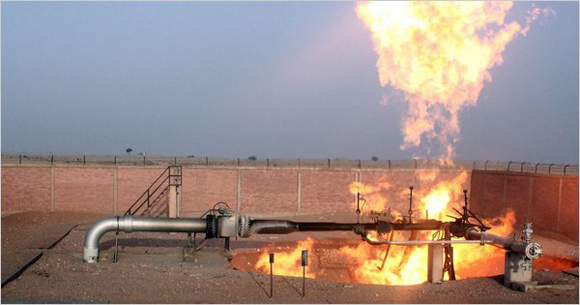
Gas Safety (Management) Regulations 1996 - GSMR
The Gas Safety (Management) Regulations 1996 (GSMR) apply to the conveyance of natural gas (methane) through pipes to domestic and other consumers and cover four main areas:
- The safe management of gas flow through a network, particularly those parts supplying domestic consumers, and a duty to minimise the risk of a gas supply emergency.
- Arrangements for dealing with supply emergencies.
- Arrangements for dealing with reported gas escapes and gas incidents.
- Gas composition.
HSE guidance on GSMR
Submission of GSMR safety case documentation
GSMR requires gas conveyors to prepare a safety case containing the information required by Schedule 1 of the regulations and have it formally accepted by HSE before conveying gas.
The tacit consent provisions of the EU Services Directive on Provision of Services do not apply to the submission of safety cases by Gas conveyors under GSMR. This confirms that a safety case has to be formally accepted by HSE before that dutyholder can convey gas.
The Gas Safety Assessment Manual (SCAM) provides a framework for assessing the GSMR safety cases within which the HSE assessors exercise professional judgement. The manual includes acceptance criteria and document submission details.
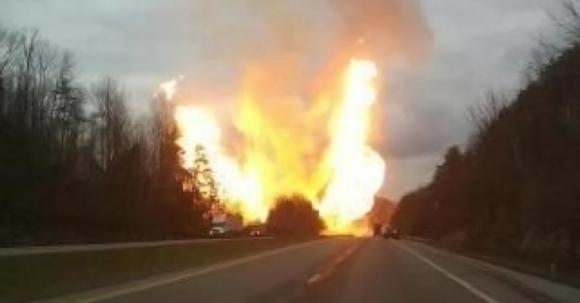
Pipeline Safety Regulations 1996 (PSR)
While GSMR deals with the managementof the flow of gas through the network, the Pipelines Safety Regulations 1996 (PSR) [OPSI] are principally concerned with pipeline integrity and aimed at securing safety in the design, construction, installation, operation, maintenance and decommissioning of pipelines.
PSR imposes general duties in relation to all relevant pipelines and additional duties with regard to major accident hazard pipelines (eg for the gas transportation and distribution network, major accident hazard pipelines are defined as those operating at pressures in excess of 7 barg).
HSE guidance on PSR
- A guide to the Pipelines Safety Regulations 1996 (PSR)
- A guide to regulation 13A of the Pipelines Safety Regulations 1996
- Further guidance on emergency plans for major accident hazard pipelines
- The design, construction and installation of gas service pipes
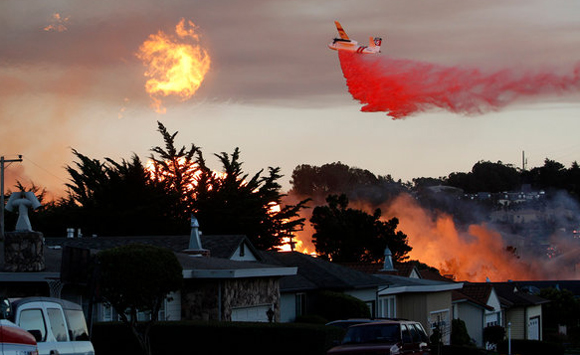
LNG Terminals - Consent and Operational Issues
- Introduction
- Frequently asked questions
- LNG storage sites and terminals in Great Britain
- Land Use Planning and Hazardous Substances Consent
- Control of Major Accident Hazard Regulations 1999
- Consent and operational issues summary
Introduction
This document describes the legal framework and the role HSE has in ensuring safety at Liquefied Natural Gas (LNG) terminals in the UK. HSE's primary role and regulatory responsibilities for ensuring safety are during the design, construction, and operation of LNG terminals and ensuring appropriate emergency plans are developed. This document also describes the legal framework and HSE's advisory role in the land use planning system. It also identifies the interfaces between HSE and other regulatory bodies who also have responsibilities associated with LNG terminals.
This document deals with the arrangements for England and Wales where all of the currently proposed LNG import terminals are situated; arrangements for Scotland are similar but different organisations are involved.
Similar arrangements to those described below apply to the transport and storage of other dangerous substances.

Frequently asked questions
What is LNG? Is it dangerous?
LNG is liquefied natural gas. This is the same gas supplied to homes and offices but in a liquid form. The gas is a liquid because it is kept at very low temperature. At ambient temperature, the liquid rapidly expands becoming natural gas.
The liquid itself is not dangerous, however any liquid released into the open, will rapidly turn into large volumes of natural gas, which could if not contained either catch fire or explode.
What assurances can HSE give regarding safety?
The primary responsibility for safety lies with the operator of the LNG Terminal. The operator has to ensure that its site is designed, and constructed, then operated safely.
The principal legislation covering LNG establishments is the Control of Major Accident Hazards Regulations 1999 (COMAH). The Regulations aim to prevent major accidents involving dangerous substances and to limit the consequences of any accident to people and the environment.
The regulations are enforced by the COMAH Competent Authority (CA) comprising HSE and the Environment Agency in England and Wales. HSE is the lead agency for LNG safety.
The safety of the terminals will be assured if the operator complies with all relevant health and safety legislation. Where LNG terminals are properly designed, constructed and operated then the likelihood of failure leading to a major accident is very low.

What measures are put in place to mitigate against the consequences of an on-site incident?
The terminal operator has a duty to prepare and test emergency procedures for dealing with the consequences of a major accident. The Local Authority must prepare an emergency plan which details how an emergency relating to a possible major accident in its area will be dealt with. If you live in the vicinity of the terminal you will have been provided with information on what to do in the event of an incident. The emergency plan should specify how warnings will be given to members of the public who may be affected by an incident or accident.
Who is responsible for ensuring safety at the site?
The primary responsibility for ensuring safety lies with the operator of the LNG site.
HSE's role is to assess the COMAH pre-construction and pre-operation safety reports submitted by the operator and by undertaking regular inspections of the site during its construction. Further inspections will then be carried out at the site throughout its operational life to ensure the operator continues to run the site safely.
The nature of LNG sites means HSE is also required to work closely with other, relevant agencies, including; for example, the Maritime and Coastguard Agency and Hazardous Substances Authorities to ensure a coordinated response whenever necessary.

Who ensures the safety of LNG vessels in transit to, approaching, and moored on the jetty?
HSE advises on those elements within its expertise, i.e. the unloading and land based activity. Where shipping is involved it is for the Hazardous Substances Authority to decide whether or not to consult other, such as the Maritime and Coastguard Agency, in addition to other statutory consultees. The functions, responsibilities and means of co-operation between HSE and Maritime and Coastguard Agency operational activities are set out in a Memorandum of Understanding between HSE and MCA.
What are the Regulations that govern operations at this site?
Major hazards regulation has three main strands:
- First and foremost major accident prevention at the terminal is achieved through the COMAH Regulations 1999 (as amended 2005) which requires reasonably practicable measures to be in place to prevent fires and explosions from the escape of LNG at the terminal. This is achieved through effective management, process and procedures, and good practice safeguards that are proportionate to the risks. The terminal's COMAH safety reports relates to the actual or anticipated presence of LNG on site and is required to be reviewed at least every five years.
- A Hazardous Substances Consent is granted by the Hazardous Substances Authority (in this case Pembrokeshire County Council and Pembrokeshire Coast National Park Authority). A Consent is part of the second layer of public safety protection and is a land use planning (LUP) control under the EU Seveso II Directive. Although very rare, the risk of a major accident with significant off-site consequences cannot be reduced to zero even at a major hazard site which is built and operated to the relevant good practice standards required by COMAH. Consents therefore aim to control the development of new major hazard sites to ensure long-term separation with land in public use and minimise the impact of any major accident on the surrounding community. In some cases, consent conditions can be imposed that require an operator to implement additional processes and technical measures to reduce the risk and/or consequence of a major accident further than that achieved through COMAH.
- Emergency planning is the third layer and is designed to mitigate the consequences of a major accident through good on and off-site emergency response arrangements.

LNG storage sites and terminals in Great Britain
Apart from a short period in the early 1960s when Canvey Island was used as an import terminal, the 40 year history of LNG in Britain has been of strategic storage (peak shave) and land based transport of LNG to storage facilities supplying remote networks.
At the beginning of 2005 there were five Top Tier LNG storage sites at Glen Mavis, Partington, Avonmouth, Dynevor Arms and Isle of Grain. These were built approximately 30 years ago as peak shave plants to reinforce gas supplies at vulnerable points of the National Transmission System (NTS). During the summer, when demand for gas is low, the sites take gas from the NTS, liquefy it, and put it in storage. They export this gas back to the NTS to meet peak day demand in the winter, typically on 5 days per year.
There are also four Lower Tier storage sites at Wick, Thurso, Oban and Campbeltown. LNG is shipped by road tanker to provide gas for remote networks isolated from the NTS. These Scottish Independent Undertakings (as they are known) are operated by Scotland Gas Networks plc.
During 2005 the conversion of Isle of Grain from a peak shave plant to an import terminal will be completed; and work is going ahead to develop other import terminals to meet the anticipated shortfall of natural gas from the North Sea, Irish Sea and continental interconnectors.
Land Use Planning and Hazardous Substances Consent
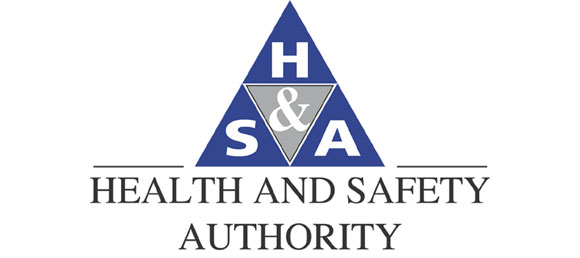
All establishments wishing to hold stocks of certain hazardous substances above a threshold quantity must apply to the Hazardous Substances Authority (HSA) - usually the local planning authority - for a hazardous substances consent under the Planning (Hazardous Substances) Regulations 19921. For LNG the threshold is 15 tonnes. HSE is one of eleven organizations that the HSA must consult as to the advisability or otherwise of locating a major hazard establishment in the location designated.
HSE assesses the risks based on the consent particulars and, in some cases, other plant features which significantly affect the risk to people and which may need to become conditions of consent. HSE advises on health and safety issues within its expertise and which are covered by the Health and Safety at Work Act; any issues about the scope of planning legislation are a matter for the HSA. There is a large body of planning law, planning circulars and legal precedents that affect what the HSA takes into account.
Where consent is granted, HSE will set a consultation zone around the major hazard site and notify the hazardous substance authority. Whenever a development is proposed within the consultation zone HSE is consulted for its advice as to the advisability or otherwise of locating the particular development there.
In England and Wales2 the hazardous substance authority makes the decisions on planning issues. HSE's role is as a consultee to inform the hazardous substances authority whether there are safety grounds for refusal.
The advice outlined above relates purely to the land use planning process and is not the principal means to achieve safety when the installation starts to operate. That is achieved primarily through the Control of Major Accident Hazard Regulations 1999 (COMAH).
Control of Major Accident Hazard Regulations 1999
The principal legislation covering LNG establishments is the Control of Major Accident Hazards Regulations 1999 (COMAH). Their aim is to prevent major accidents involving dangerous substances and to limit the consequences of any accident to people and the environment. The regulations cover the unloading equipment at the jetty, the site itself, and the outfeed up to the national gas transmission system. Dangerous substances on the ship are not covered by COMAH but are subject to the Dangerous Substances in Harbour Areas Regulations 1987.

The COMAH regulations are enforced jointly in England and Wales by a Competent Authority (CA) comprising the Health & Safety Executive (HSE) and the Environment Agency (EA)3. In the case of LNG establishments HSE is the lead authority.
An operator who plans to build a new LNG establishment has to submit information to the CA in advance of construction in the form of a pre-construction safety report (PCSR). Another, similar, report must be sent to the CA prior before dangerous substances are introduced into the plant - the pre-operations safety report (POSR). The operator has to ensure that the construction and operation of an establishment does not start until he has received from the CA the conclusions of its examination of the relevant report.
The purpose of the PCSR is to ensure that safety is considered fully at the design stage. If things need to be improved or altered then it is easier to make those changes at the design stage than to wait until the site is being built. When the CA assesses a safety report it is looking for a demonstration that adequate safety and reliability have been incorporated into the design, the application of good practice and for concepts which reduce the risks to As Low As is Reasonably Practicable (the ALARP Principle). Operators must, as a minimum, meet recognised good practice and then look at what more can be done to reduce risks without excessive costs.

The POSR must demonstrate that the operator has taken all measures necessary to prevent major accidents and to limit the consequences to people and the environment of any that do occur. If the CA considers that there is evidence of serious deficiency in any of the measures taken or proposed it will prohibit the operation of those parts of any establishment which are seriously deficient.
As well as assessing the formal safety reports the CA is required to organise an adequate system of inspections while the establishment is operational - this is developed towards the end of the POSR assessment. The CA will also investigate incidents and accidents which occur on site.
Regular inspection visits will be made during the construction phase to ensure that the integrity of the plant and equipment is in accordance with the information provided in the PCSR, including adherence to recognised and accepted standards and good practice. The construction activities on site will also be inspected to check that the operator is doing all that is necessary to ensure the health and safety of those at work.
Under COMAH, operators of LNG terminals are also required to produce an on-site emergency plan before the establishment starts to operate and must provide information to the local authority to assist them in their production of an off-site emergency plan. The plans' objectives are to contain and control incidents to minimise the effects and to limit damage to persons, the environment and property.
Consent and operational issues summary
| Hazardous Substances Consent & Land Use Planning | COMAH - pre-construction, pre-operational and operational phase | |
|---|---|---|
| Ship in transit to, approaching, and moored on the jetty | HSE advises on those elements within its expertise, i.e. the unloading and land based activity. Where shipping is involved it is for the Hazardous Substances Authority to decide whether or not to consult others, such as the Maritime and Coastguard Agency, in addition to the eleven statutory consultees. The functions, responsibilities and means of co-operation between HSE and the Maritime and Coastguard Agency (MCA) operational activities are set out in a Memorandum of Understanding between HSE and the MCA. Land Use Planning and Hazardous Substances Consent issues are not covered by that document. | LNG on the ship at the jetty is not considered to be part of the inventory of the COMAH establishment but must be taken into account if it could cause or exacerbate a major accident. Safety reports are required to take account of external events which could lead to a major accident at the establishment and an incident on a ship must be taken into account in the safety report to the extent that it could affect the safety of the establishment. Harbours used for the unloading of LNG are managed by statutory harbour authorities which have duties under the Dangerous Substances in Harbour Areas Regulations 1987. Harbour authorities control the marine traffic into and through the harbour,, and the berthing and moving of ships. They are bound by the Port Marine Safety Code, compliance of which is monitored by the Maritime and Coastguard Agency (MCA). The functions, responsibilities and means of co-operation between HSE and MCA operational activities are set out in a Memorandum of Understanding between the two bodies. |
| Connections between the ship and the jetty and unloading operations | HSE is one of eleven statutory consultees to the local Hazardous Substances Authority under the Planning (Hazardous Substances) Regulations 1992. HSE advises on those elements within its expertise, which includes the unloading and land based activity. | The safety reports should include an assessment of the integrity of the LNG off-loading arrangements between the ship and the establishment. These arrangements should, as a minimum, be designed in accordance with BS EN 1523:1997 “Installation and equipment for liquefied natural gas - Ship to shore interface”. Note: Under the Dangerous Substances in Harbours Regulations 1987, HSE enforces the safety precautions which must be taken during the unloading of dangerous substances within the harbour area. |
| Pipelines between jetty and storage | Pipelines which are within the area notified under the hazardous substances consent, are included within the hazardous substances consent consideration. Pipelines outside this area have to be notified to HSE under The Pipelines Safety Regulation 1996. When HSE is notified it advises the local authorities of appropriate land use planning controls along the route of the pipeline on the basis of the information supplied with the notification. | The safety reports should include an assessment of the integrity of the LNG pipelines within the COMAH establishment. These are designed and installed to recognised standards such as ASME B31.3 - Process Piping, a chemical plant and petroleum refinery piping code. The design takes into account of the low temperature service of the pipelines. |
| Storage tanks | Storage tanks are a significant consideration in the advice HSE provides as a statutory consultee under the Planning (Hazardous Substances) Regulations 1992. | The safety report should consider the effect of foreseeable hazards such as extreme weather, aircraft impact, earthquakes, etc. on the storage tanks and any release that may result. However, the assessment is restricted to foreseeable accidental impact - not to terrorist activity. (see below) The site survey should investigate the geological characteristics of the region in sufficient detail to provide a clear understanding of the physical processes that formed the area, as well as the potential for the future seismic activity. The size of the region to be investigated depends on the nature of the area around the site and is generally limited to a distance of 320 km from the site. |
| Regasification plant and compression | HSE is one of eleven statutory consultees to the local Hazardous Substances Authority under the Planning (Hazardous Substances) Regulations 1992. HSE advises on those elements within its expertise, i.e. the unloading and land based activity. Regasification and compression plant are covered by the advice HSE provides. | Once the establishment is in operation, the CA will draw up an intervention plan and have a schedule of inspections to confirm that operations take place in accordance with the COMAH safety report and health and safety law. |
| Export pipeline | When HSE is notified under The Pipelines Safety Regulations 1996, it advises the local authorities of appropriate land use planning controls along the route of the pipeline on the basis of the information supplied with the notification. | Under The Pipelines Safety Regulations 1996, the pipeline operator must notify HSE of any new pipeline which is to be constructed to allow the gas from a new establishment to be connected with the National Gas Transmission System. HSE will assess the pipeline design, and inspect the construction and +operation of the pipeline. |
| Effect on other sites - "Domino effect" | This is not dealt with as part of the consent process but is covered by provisions of the COMAH regulations. | Regulation 16 of the COMAH Regulations requires the Competent Authority to use information provided in notifications and safety reports to designate groups of establishments where the likelihood or consequences of a major accident may be increased because of the location and proximity of establishments in the group and the dangerous substances present there. These are commonly referred to as “domino sites”. The Competent Authority will notify the operators of establishments in such groups of the names and addresses of the other operators in the group who are then obliged to exchange appropriate information about their establishments. The operators must take account of this information in their major accident prevention policy documents, safety reports and emergency plans. If it is decided that this Regulation applies to an LNG terminal, the operator will be duly notified and advised of the need to take account of potential incidents in neighbouring establishments in the risk assessment for the LNG establishment. |
| Terrorist activity | The Hazardous Substances Authority is advised by the security services and Home Office on terrorist issues. | The safety reports should consider the risks arising from trespass of an ordinary member of the public. Terrorist issues are a matter for the security services and the Home Office. |
| Emergency planning | This is not dealt with as part of the consent process but is covered by provisions of the COMAH regulations. | Operators of LNG terminals are required to produce an on-site emergency plan before the establishment starts to operate and must provide information to the local authority to assist them in their production of an off-site emergency plan. The plans' objectives are to contain and control incidents to minimise the effects and to limit damage to persons, the environment and property. In harbours subject to the Dangerous Substances in Harbour Areas Regulations 1987 the harbour authority must develop an emergency plan for dealing with incidents involving dangerous substances. Harbour Authorities should liaise with people producing on-site and off-site emergency plans for COMAH sites so that the plans are compatible in the event of a major emergency affecting both the site and the harbour or harbour area. |
Pipelines and Gas Supply Industry
How deep should gas mains and services be laid?
Introduction
The Health and Safety Executive [HSE] receives a number of enquiries each year about the minimum depth at which gas mains and services should be laid. Often the enquiries are prompted when members of the public damage pipes at home (for example when gardening) or contractors damage pipes when carrying out work at domestic premises (for example when relaying driveways).
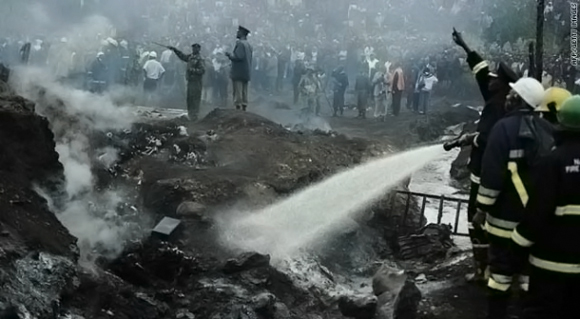
This information document summarises the legal requirements concerning how deep gas mains and services should be laid and the precautions required to minimise the risk of damage to pipes from third party activities. The guidance should be considered as minimum good practice standards.
Minimum depth requirements
Gas mains and service pipes should be designed and installed in accordance with the requirements of the Pipelines Safety Regulations 1996 (PSR). PSR does not specify how deep mains and services should be laid.
However, the Regulations are supported by HSE guidance 'A guide to the Pipelines Safety Regulations 1996' and there is also a Health & Safety Commission [HSC] Approved Code of Practice and Guidance 'Design, construction and installation of gas service pipes'.
These publications refer to the Institution of Gas Engineers' guidance 'IGE/TD/3 Distribution Mains' and 'IGE/TD/4: Gas services' which specify the minimum depth of cover which gas mains and services should be laid in order to minimise the risk of accidental third party damage.
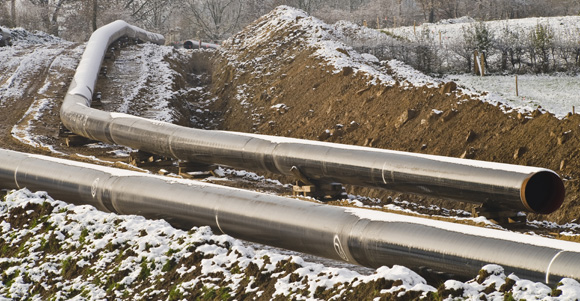
HSE expects mains and services to be laid at the depths specified in these publications unless other effective precautions are taken to minimise the risk of third party damage.
- A gas main should normally be laid with a minimum depth of cover of 750 mm in a road or verge and 600 mm in a footpath.
- A gas service pipe should normally be laid with a minimum depth of cover of 375 mm in private ground and 450 mm in footpaths and highways.
However, these depths are only a guide and should not be relied on when carrying out work near gas services or mains. For example, road levelling, landscaping and other changes to ground conditions after a gas main or service has been laid (often decades before) can result in the depth of the ground cover changing over time. Also, gas pipes may have projections coming from them, such as valves, which are not shown on plans and may have less depth of cover than the pipe.
How should I minimise the risk of damaging gas mains and services?
Gas mains and services are at risk of being damaged by third party interference during construction activities. PSR, regulation 15 requires that no person should cause damage to a 'pipeline and is aimed at third parties carrying out work around pipelines.
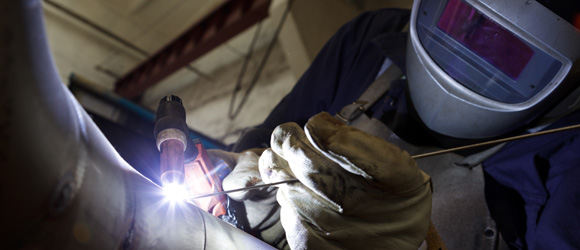
HSE publication HSG47 'Avoiding danger from underground services' [2001] gives detailed guidance to contractors on avoiding damage to gas mains and services, including information on detecting underground services and safe digging practices. Further guidance is given in HSE Topic information sheet Avoiding damage to buried services .
The key precautions include:
- Obtain plans of the gas pipes from the pipeline operator;
- Locate the line of the pipes using suitable locating devices;
- If pipes operating at pressures of 2 bar and above are indicated, contact the pipeline operator before work begins;
- Ensure site workers are briefed on the location of the pipes and the precautions required;
- Adopt safe digging practices. For example, mechanical excavators should not be used within 500mm of a gas pipe and excavations should be done using hand tools.
What is HSE's enforcement policy?
- HSE is satisfied that providing the above standards are met, then the risk of damage to gas mains and services is low.
- HSE continues to work with pipeline operators to ensure that mains and services are laid at the depths outlined above.
- HSE expects contractors to meet their obligations to prevent damage to gas mains and services, which includes compliance with the requirements in HSG47.
Mains replacement - Do all gas conveyors need approved iron mains replacement programmes?
Under the Pipelines Safety Regulation [PSR] 1996, regulation 13, gas conveyors are required to maintain their networks in a safe condition.

In respect of iron gas mains, there is currently no feasible alternative to maintaining the network other than to decommission it and replace it with a more suitable material, usually polyethylene. This is the basis of HSE's enforcement policy, which requires iron gas mains within 30m of property to be decommissioned and replaced at the latest by March 2032.
In support of that policy PSR was amended in 2003 to allow HSE to approve a programme submitted by a pipeline operator for the decommissioning of iron pipes. This includes cast and ductile iron pipes but not steel or pipes made from other materials. The intention of PSR regulation 13A was to give legal underpinning to HSE's Enforcement Policy and was principally aimed at major distribution networks which, because of their size, have practicable constraints on how much main can be replaced each year.
There is no legal requirement for pipeline operators to have an approved replacement programme. However, if they submit a programme which is suitable and sufficient, HSE must approve it. HSE may also prepare and approve a programme for which no suitable and sufficient programme has been prepared by a pipeline operator.
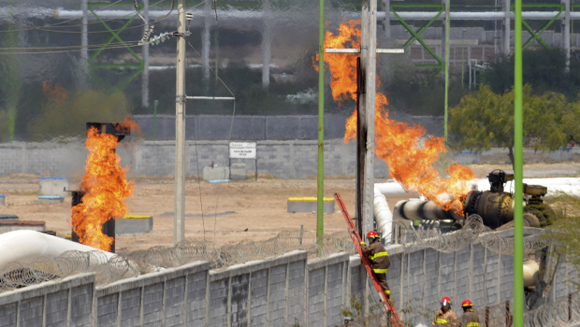
If pipeline operators have an approved programme, they have a defence from prosecution if they are complying with it and a failure occurred on a pipe which was not yet due for replacement under the programme. However, the defence would not apply if the operator had knowledge which would indicate that the particular pipe was likely to fail.
It is important to note that the defence provided by regulation 13A does not give operators total immunity from prosecution. They still have an overarching duty under the Health and Safety at Work Act 1974 to do everything reasonably practicable to ensure the health and safety of both their employees and non-employees (which includes the general public), and the defence provided by the new regulation 13A does not remove that duty. It is only in the circumstances set out in PSR paragraph 13A(6) that the operator is provided with a defence.
Details of the approved programmes can be found on the Information page.
Would other European countries allow a pipeline to operate at 94 bar?
The European standard for gas pipelines is EN 1594-2000 "Gas supply systems - Pipelines for maximum operating pressure over 16 bar - Functional requirements". This standard applies across the EU and in some other European countries such as Switzerland; it may be supplemented by national standards.
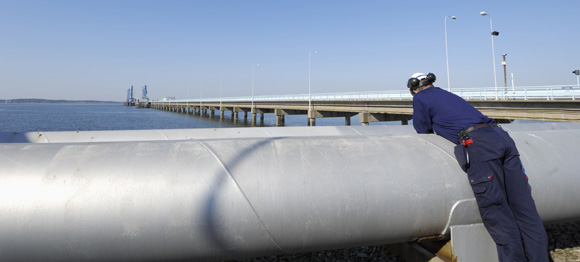
Other European countries either permit or already operate high pressure pipelines. For example:
- In Germany Ruhrgas has operated some 250km of 100bar pipeline since 1993
- In Ireland pipelines are built in accordance with I.S. 328 : 2003 Code of Practice for Gas Transmission Pipelines and Pipeline Installations. This allows pipelines to operate at up to 100 bar, though none currently operate at this pressure.
- The Dutch standard for pipelines is NEN 3650(2003). The standard does not specify operational pressure limitations but specifies that pipelines should be designed so that additional risks are tolerable. A 100 bar onshore gas pipeline is currently being designed.
How will the pipeline be inspected for build quality and deterioration?
Before the pipeline is tested all welds will have been inspected for defects by ultrasonic or radiographic techniques.
The Pipeline Safety Regulations 1996 require National Grid to maintain the pipeline in good repair. The operator will carry out an on line inspection using an inspection tool, known as a pig, which is propelled inside the pipeline by the gas flow. The first inspection will take place early in the life of the pipeline and at scheduled intervals afterwards. Inspection pigs at the size of the Milford Haven pipeline (48 ins) are in use on existing NTS pipelines.
Who is responsible for emergency planning around the pipeline?
The pipeline operator has a duty to prepare and test emergency procedures for dealing with the consequences of a major accident involving a pipeline.

The local authority must prepare an emergency plan which details how an emergency relating to a possible major accident in its area will be dealt with. There is no legal requirement for information about a major accident hazard pipeline to be supplied to the public by the local authority or pipeline operator. However, local authorities and/or pipeline operators may elect to supply information in some cases – e.g. to those who have responsibility for vulnerable groups such as schools, hospitals and homes for the aged. The emergency plan should specify how warnings will be given to members of the public who may be affected by an incident or accident.
Emergency procedures and plans are already in place for the existing 6,800km of pipelines in the national gas transmission system.
What protection is there against terrorism?
The security services are involved in deciding on the appropriate measures which need to be taken to combat terrorism. HSE looks at the work related risks.

Will the pipeline be safe?
We know that if the pipeline is properly designed and constructed then the likelihood of failure when it is brought into service will be remote. With adequate standards of inspection, monitoring and maintenance during its life the risks from the pipeline will be kept to a very low level. HSE’s pipelines inspectors will assess the adequacy of the operator’s design and inspect the construction phase of the project. Further inspections will follow during the pipeline’s operational life.
The risks from the pipeline will be very low and comparable to many other risks which we experience in our everyday lives. There is no guarantee of absolute safety in anything that we do, even crossing the road and everyday activities around the home carry elements of risk. In comparison to other risks we experience in normal life the pipeline will be safe.
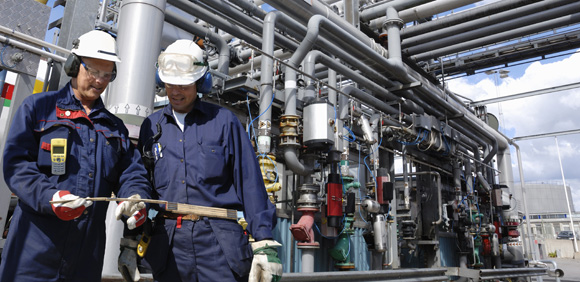
The Milford Haven pipeline is part of a category of some 22,000km of pipelines designated, as "major accident hazard pipelines". There is a requirement under Land Use Planning (LUP) for the area surrounding these pipelines to be zoned to indicate the level of risk more explicitly. The Inner Zone generally coincides with a surrounding area within which there is a 10 chances per million (cpm) per year risk to a typical householder of exposure to a ‘dangerous dose’. The 'dangerous dose' level is taken to be equivalent to a 1% chance of fatality when a healthy person receives the dose.
However for the Milford Haven pipeline which carries natural gas, the risk is much lower approximately 2 cpm directly on top of the pipeline itself. In such cases HSE pragmatically sets the Inner Zone by using the building proximity distance as defined in the Institution of Gas Engineers and Managers design code "Recommendations on Transmission and Distribution Practice" (IGE/TD/1). This proximity distance is the minimum distance recommended between the pipeline and any normally occupied building.
The following table summarises the Land Use Planning zones for the Milford Haven Pipeline.
| Land Use Planning Zones | ||
|---|---|---|
| Annual risk of being exposed to a dangerous dose* | Annual risk | Annual risk per million |
| Pipeline Inner Zone (within 135 m) | Less than 1 in 500,000 | Less than 2 |
| Pipeline Middle Zone (within 370 m) | 1 in 1,000,000 | 1 |
| Pipeline Outer Zone (within 440 m) | 1 in 3,000,000 | 0.33 |
| * The 'dangerous dose' level is taken to be equivalent to a 1% chance of fatality when a healthy person receives the dose. Normally the Inner Zone would have a risk of 1 in 100,000 (10 cpm) but the risk in the inner zone for this pipeline is considerably less as the zone distance is determined by the design code’s building proximity distance. | ||
The following table compares the calculated risks from the pipeline with risks that are experienced in normal life.
| Risks in ‘normal life’ for comparison with those from the pipeline | ||
|---|---|---|
| Annual risk of death | Annual risk | Annual risk per million |
| All causes, aged 45-64 ( England and Wales, 2003) (1) | 1 in 190 | 5230 |
| All causes, aged 30-44 ( England and Wales, 2003) (1) | 1 in 940 | 1060 |
| Accidents in the home, all ages ( England and Wales, 2004) (3) | 1 in 17,000 | 60 |
| Road accidents ( Great Britain, 2005) (2) | 1 in 18,000 | 55 |
| Accidents in the home, aged 15-64 ( England and Wales, 2004) (3) | 1 in 25,000 | 40 |
| Injuries to all employees in different industries ( Great Britain, average 2001/02-2005/06) (4) | 1 in 140,000 | 7 |
| Injuries to employees in service industries ( Great Britain, average 2001/02-2005/06) (4) | 1 in 330,000 | 3 |
| A typical householder living about 150 metres from the pipeline (5) | 1 in 1,000,000 | 1 |
| A typical householder living about 300 metres from the pipeline (5) | 1 in 3,300,000 | 0.3 |
| Lightning (6) | 1 in 19,000,000 | 0.05 |
| Sources : (1) Office for National Statistics Focus on Health: (2) Department for Transport Road Casualties Great Britain: 2005 (Table 31) (3) Office for National Statistics Mortality Statistics – Injury and poisoning (4) Health and Safety Commission Statistics of Fatal Injuries 2005/06 (5) Risk criteria for land-use planning in the vicinity of major industrial hazards, HSE, 1989,ISBN 0 11 885491 7. (These same criteria are used for flammable substances in pipelines.) (6) Deaths and injuries caused by lightning in the United Kingdom: analyses of two databases, D. M. Elsom, Tornado and Storm Research Organisation, 2000 Note : Annual risks are given to 2 significant figures. | ||
Gas Supply Industry Health and Safety
In Great Britain natural gas is distributed to domestic, commercial and industrial consumers through an onshore network of buried pipes totalling around 275,000km.

This website gives information on the regulation of health and safety for the natural gas supply industry. It outlines how the hazards and risks posed by the network are controlled and describes what HSE are doing to work with industry to achieve this.
The information is aimed at duty holders who work in the gas supply industry as well as gas consumers, stakeholders and others who may be affected by it.
- HSE programme of work and inspection
- Iron mains replacement
- Industry information, safety notices and reports
Technokontrol Certificates & Associations
Technokontrol Manufactures, Designs & Researches our safety products in the European Union at the highest possible International Accident,Health & Safety standards.
TechnoKontrol is a member of the NFPA
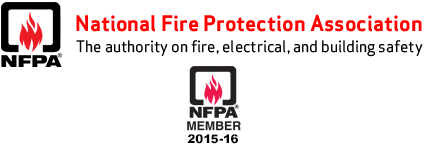
TechnoKontrol Products are ATEX Compliant
(European Antiexplosive Safety Directives)

Technokontrol's Products & Services are insured by

Certificates



































Company Sections
- The Corporation
- Company Introduction
- Mission Statement
- Our Team
- Our Plant
- Product Presentation
- TK-Global Engineering
- TK-Global Electronics
- TK-Global Environment
- TK-Global Technotelecom
- TK-Corporate Governance
- TK-Emergency Call Center
Commitment to Quality
TechnoKontrol Wikipedia

TechnoKontrol: 1st in Spain for own Technology patents 2013 & 2014

- Ministerio de Industria Turismo y Comercio-OEPM
Technokontrol, the number 1 corporation in Spain filing for its own technology patents, trademarks and utility patents (SPA) - OEPM 2013 The year in numbers (SPA)
TechnoKontrol has been fully verified and certified by Bureau Veritas
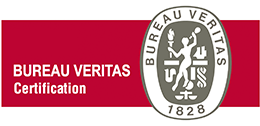
Certificates
- ISO 9001 - ES108784-1
- ISO 14001 - ES108782-1
- ISO 45001 - ES108783-1
- ISO 4126
- ISO 28000
- ISO 37000
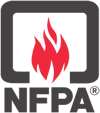
NFPA-National Fire Protection Association
NFPA-Asociación Nacional de Protección contra el fuego
TechnoKontrol is a member of the NFPA
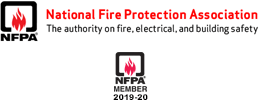
NFPA 69: Standard on Explosion Prevention Systems, 2016 Edition
Prevent deflagration explosions due to combustible dust particles, gases or vapors with NFPA 69. Combustible dust, gases and vapors produced in industrial settings can pose a significant safety hazard.NFPA 69: Standard on Explosion Prevention Systems offers definitive guidance on explosion protection and prevention systems.
ATEX - European Antiexplosive Safety Directives

- ATEX Guide: Protection in explosive atmospheres
- ATEX-EU/HAZLOZ-USA/NFPA-USA/DSEAR-UK/Explosion Directives TechnoKontrol Additional Anti-Explosion Data
- ATEX Directive in EU Directives
Dangerous Substances and Explosive Atmospheres Regulations - United Kingdom/ATEX

United Nations Economic Commission for Europe - UNECE - TechnoKontrol

- TechnoKontrol information for the UNECE BLEVE working group
Proposal transmitted by the governments of Spain and France
The European Parliament and The Council

Technokontrol's Products & Services are insured by

Dossiers TK Group of Companies
TK-Global Engineering


More info
Should you want to receive more information, please contact us.
